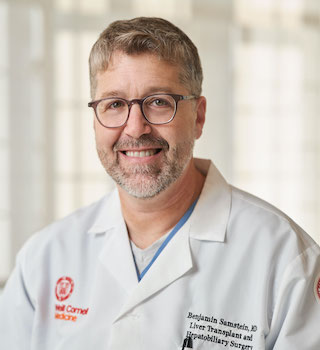How Is The Liver Like a Starfish and a Lizard?
Its remarkable powers include the ability to regenerate. The “Super Liver” makes living liver donation possible.
The liver is an organ we rarely think about, yet it performs hundreds of functions. Some of those functions include filtering toxins, creating proteins, boosting the immune system, and regulating the body’s temperature, to name a few. Weighing in at roughly 2 percent of a person’s body weight, the liver is an extremely high-functioning, adaptable organ.
But even more amazing is its ability to regenerate. When a portion of the liver is removed, the liver’s cells divide and regrow the lost tissue within days. The growing liver can double its original size within four to six weeks, says Dr. Benjamin Samstein, chief of liver transplantation at NewYork-Presbyterian/Weill Cornell Medical Center.
That’s great news for those in need of a liver transplant; the liver’s ability to regenerate means living liver donation is also an option, which could help the thousands of Americans on the national transplant waiting list who may wait months or years to receive a donor liver.

Dr. Benjamin Samstein
People who donate a portion of their liver experience regrowth within a week; the difference is visible by a CT scan or an MRI, adds Dr. Samstein, who is also surgical director of the Living Donor Liver Transplant Program at NewYork-Presbyterian and professor of surgery at Weill Cornell Medicine.
Approximately 10,000 people in the U.S. are currently waiting for a liver transplant, according to the Organ Procurement and Transplantation Network.
NewYork-Presbyterian is aiming to reduce that number by offering a minimally invasive laparoscopic procedure that significantly reduces recovery time for living liver donors.
Additional Resources
Learn more about NewYork-Presbyterian’s Living Donor Liver Transplant Program.
See how you can sign up to become an organ donor.
Find out more on NewYork-Presbyterian’s comprehensive liver care.
